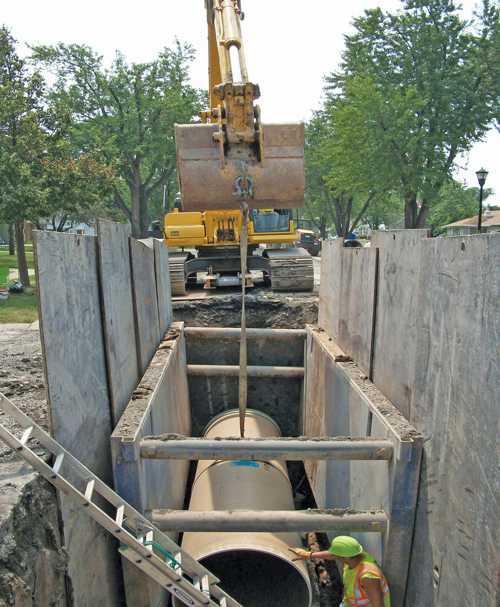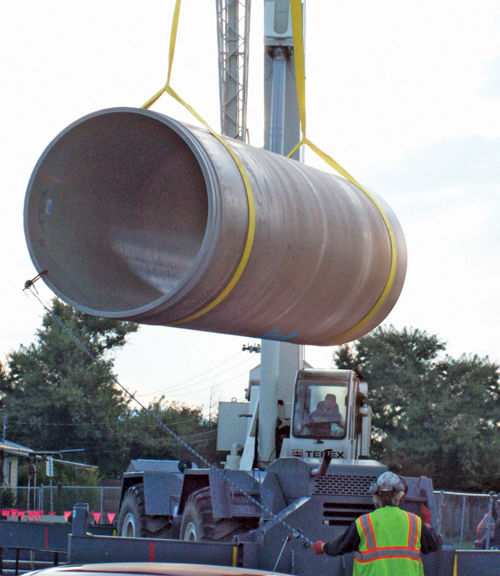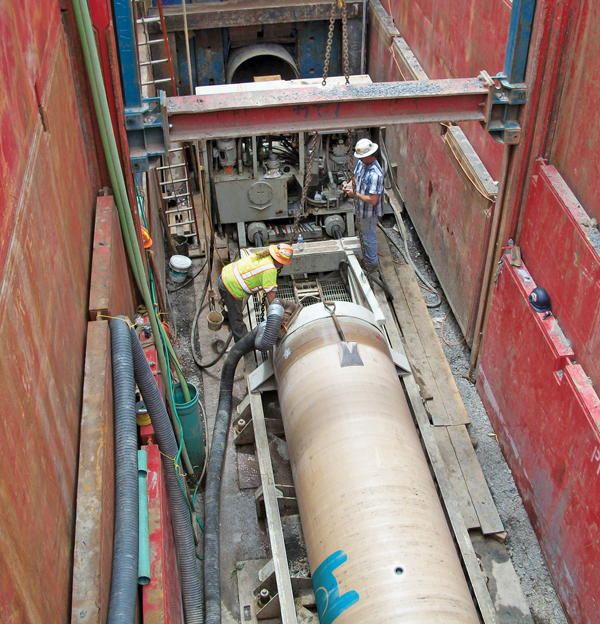Sewers in Niagara Region Preserved Using Utility Tunneling

For Tonawanda, being stewards of the environment extends to the preservations of natural resources such as the nearby Ellicott Creek, which discharges into the Niagara River that flows north from Lake Erie draining into Lake Ontario. The river includes a prominent tourist destination — Niagara Falls. The falls are actually a group of falls, which include the Horseshoe Falls, American Falls and the smaller Bridal Veil Falls. The combined falls form the highest flow rate of any waterfall in the world, with a vertical drop of more than 165 ft (50 m).
Deteriorated Concrete
Although in a picturesque area, Tonawanda has been challenged recently to address its sanitary sewer overflows (SSOs), which could have a significant effect on residents and the environment. To address the aging infrastructure problem, the Town is beginning a complex and cost-intensive program that will abate numerous SSOs, which can occur during wet weather events. In 2006, a major collapse occurred on the Parker-Fries Interceptor that required a costly repair and could have resulted in significant basement backups. This major interceptor became the first project in the Town’s complex and cost-intensive program to address the poor overall condition of the sewers.
Tonawanda selected CRA Infrastructure and Engineering Inc., (CRA), in Buffalo, N.Y., to develop a set of improvements for the Parker-Fries Interceptor Project. The comprehensive plan included considerations of the existing interceptor alignment, utility conflicts, Parker Pump Station operation, subsurface geotechnical conditions and impacts to the residents.

“Due to the size, complexity and cost of the project, the Parker-Fries Interceptor Project was split into four phases with implementation over approximately seven years,” stated Kenneth Maving, director of water resources for the Town of Tonawanda.
Town and CRA officials evaluated the possible large diameter piping options and decided to include only HOBAS pipe in the project specifications. They said it was important to find a product with a proven track record that would provide a long service life, including the leak-free capability of the product and its resistance to sulfuric acid, which gives HOBAS a 100-year service life in a sanitary sewer environment.
Phase One of the Parker-Fries Interceptor Project was bid in February 2010 and awarded in June 2010. Kandey Company Inc. of West Seneca, N.Y., was awarded the $26.4 million project and construction began in summer 2010. The job was scheduled to last two years and was completed in July 2012. Kandey is a site and utility contractor specializing in civil engineering construction and has been providing services throughout the Buffalo and western New York areas since 1984. Although they are experienced with utility installation, this was their first experience utilizing HOBAS pipe. The installation included more than 4,000 ft of 84-, 72- and 48-in. diameter sewer pipe installed by tunneling and 5,700 ft of 48-, 36- and 30-in. diameter installed by open-cut. A 46-psi pipe stiffness product was supplied for the direct bury portion of the project, which ranged in depth from 10 to 30 ft. HOBAS supplied flush joint jacking pipe in a variety of axial capacities for the portions of the project that were installed by direct jacking.

The project was challenging, with project coordination including several public meetings to address traffic and other citizen concerns. In the fifth and last public meeting concerning the project, Tonawanda’s town supervisor, Anthony F. Caruana, stated, “The good news is that we’re ahead of schedule and we’re also under budget.”

This article was supplied by HOBAS USA.
